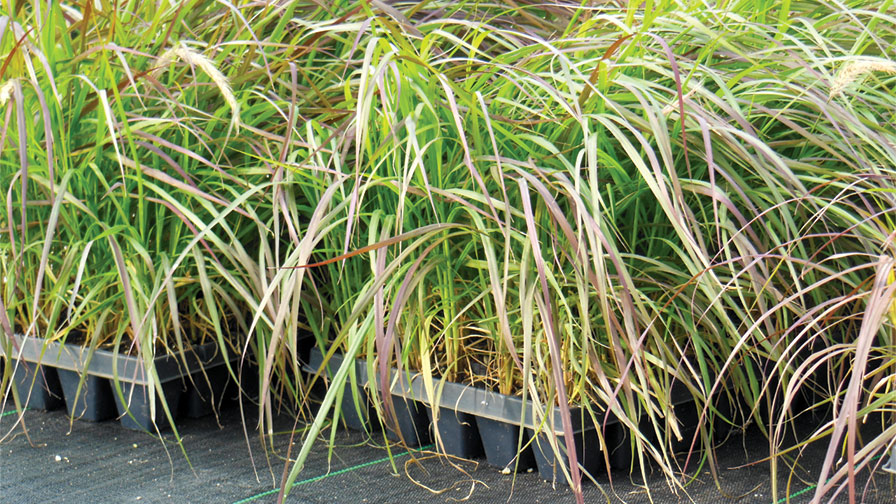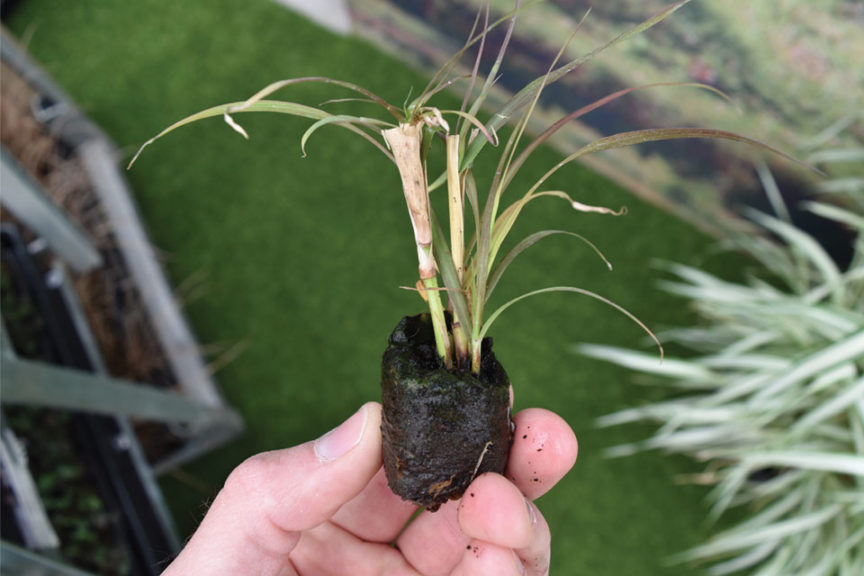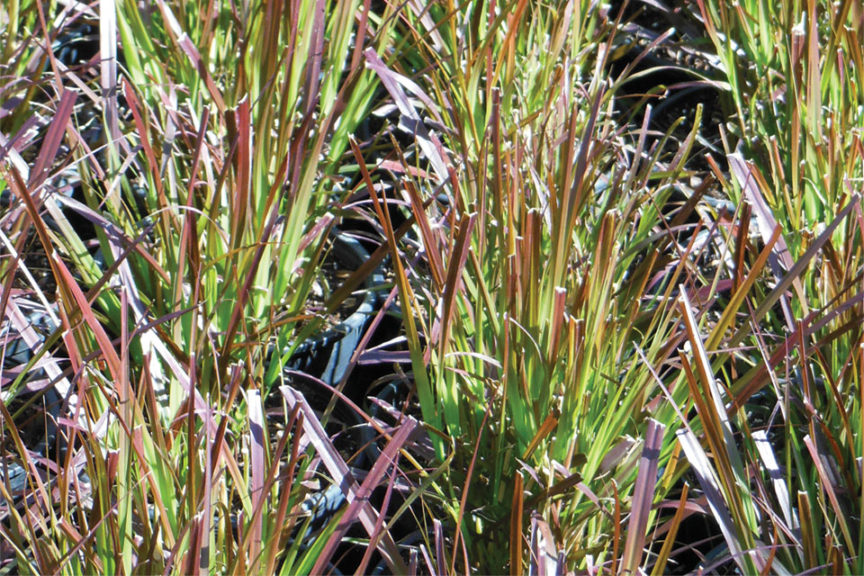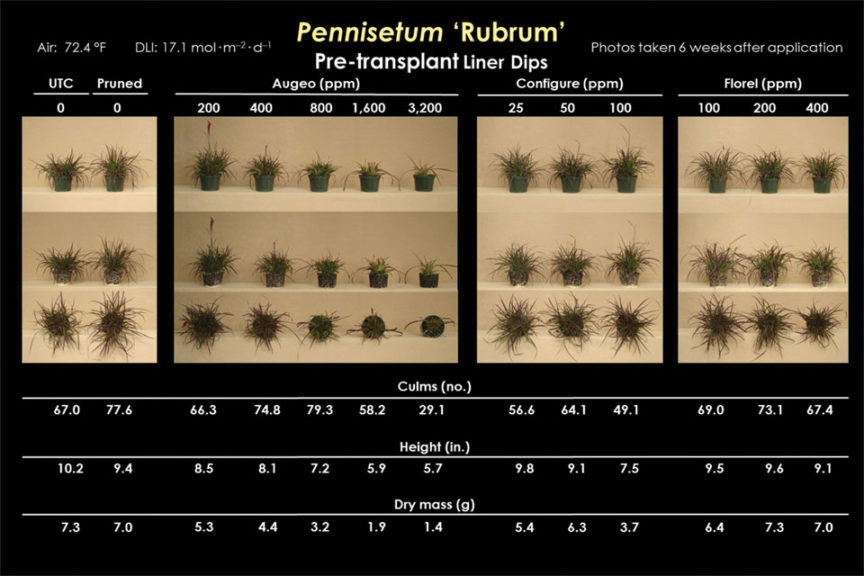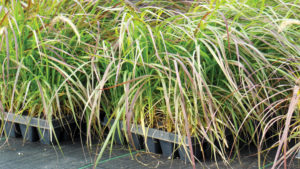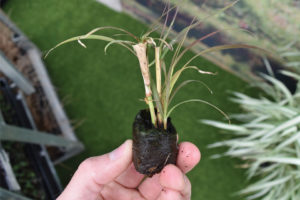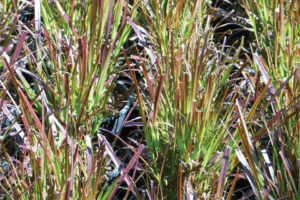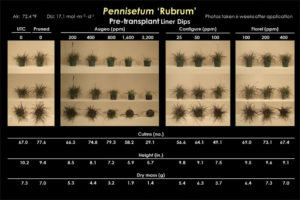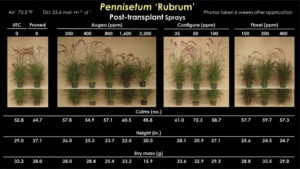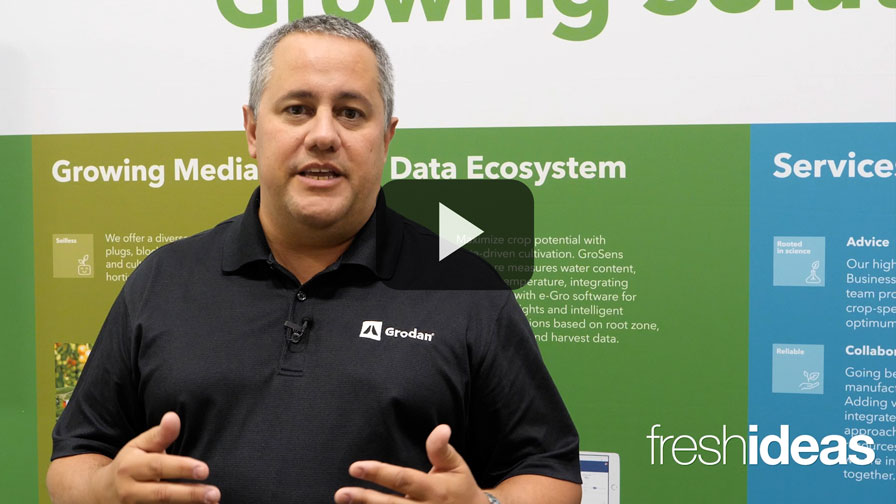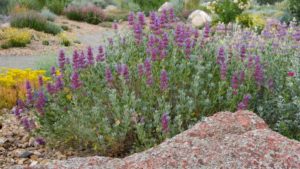Bulking and Height Control of Purple Fountain Grass With Plant Growth Regulators
Are you tired of your purple fountain grass [Pennisetum ×advena (formerly known as P. setaceum ‘Rubrum’)] not filling in the container? Are you exhausted from pruning your purple fountain grass crop with little to no bulking occurring? Are the flowering stems (culms) damaged during shipping because your crop is too tall?
In this second article of a two-part series, we will discuss how pre-transplant liner dips and post-transplant spray applications of plant growth regulators (PGRs) can assist you in bulking and controlling the height of purple fountain grass.
Purple fountain grass liners derived from crown divisions, tissue culture plantlets, or vegetative culm cuttings are often tall (Figure 1, see slideshow) and not well branched (Figure 2, see slideshow) when they are transplanted into the final container. In order to control height (Figure 3, see slideshow) and promote tillering (branching), hand or mechanical pruning is commonly practiced by growers, which is often inconsistent and time consuming, and the resulting wounds may provide an entry point for pathogens. To eliminate this labor-intensive cultural practice, growers often apply PGRs to control crop growth and development, and manipulate the plant’s architecture.
An extensive list of PGR liner dip and spray recommendations for commonly produced annual bedding plants and herbaceous perennials is available to growers. However, for ornamental grasses, PGR recommendations (chemical, application rate, and method of application) is limited and genera specific.
Many growers have specifically inquired about methods to either quickly bulk or control plant height of purple fountain grass. Therefore, our objectives were to evaluate and quantify the effectiveness of pre-transplant liner dips and post-transplant liner spray applications of dikegulac-sodium, 6-benzylaminopurine (6-BA), or ethephon to increase the number of culms of vegetatively propagated, single-internode purple fountain grass culm cuttings.
Pre-Transplant PGR Liner Dip Applications
Rooted single-internode culm cuttings of purple fountain grass in a 50-cell tray were dipped into solutions containing 200, 400, 800, 1,600, or 3,200 parts per million (ppm) Augeo (dikegulac-sodium; OHP, Inc.); 25, 50, or 100 ppm Configure (6-benzylaminopurine; Fine Americas, Inc.); 100, 200, or 400 ppm Florel (Ethephon; Bayer AG), or deionized (DI) water (untreated control; UTC) for two minutes or hand pruned 4 inches from the substrate surface. The next day, liners were transplanted into 5-inch diameter plastic containers filled with a commercial soilless peat-based substrate. Plants were hand irrigated as needed with 200 ppm nitrogen (N).
For six weeks, plants were grown in a polyethylene-covered greenhouse under an average daily air temperature and daily light integral (DLI) of 72°F and 17 mol·m–2·d–1, respectively. At six weeks after PGR application or pruning, culm number (number of developed culms), plant height (measured from the container rim to the tallest arching leaf blade), and plant dry mass were determined.
Post-Transplant PGR Spray Applications
For the post-transplant PGR spray application study, we kept the greenhouse environmental conditions, plant cultural procedures, and PGR spray application rates similar to those used for the PGR liner dips. In this experiment, rooted single-internode culm cuttings of purple fountain grass were transplanted and grown for 12 days before a post-transplant PGR spray application or pruning was performed. During the six weeks, average daily air temperature and DLI were 73°F and 24 mol·m–2·d–1, respectively.
Pre-Transplant PGR Liner Dip Application Results
Untreated purple fountain grass plants were on average 10.2 inches tall and exhibited 67 culms, but were comparable to plants that were hand pruned. Plants dipped in 100, 200, or 400 ppm Florel, pruned, and the untreated control (UTC) exhibited similar culm numbers, plant height, and dry mass (Figure 4, see slideshow).
Compared to plants that were pruned, plants dipped in solutions containing 25, 50, or 100 ppm Configure did not exhibit increased culm numbers, though a 100 ppm Configure dip did result in the greatest height control. Culm number was generally similar between plants dipped in 200 to 800 ppm Augeo, 100 to 400 ppm Florel, water, and hand pruned. However, >800 ppm Augeo and 100 ppm Configure inhibited culm growth and development. Visually, we observed phytotoxicity when liners were dipped in 800 to 3,200 ppm Augeo. Compared to plants that were hand pruned, plants dipped in 400 to 1,600 ppm Augeo resulted in decreasing plant height from 8.1- to 5.9-inches, respectively.
Post-Transplant PGR Spray Application Results
Except for plants sprayed with 50 ppm Configure, we found culm numbers to be similar among plants sprayed with all PGR applications or the UTC (Figure 5, see slideshow). Pruning purple fountain grass or applying a post-transplant spray application of 50 ppm Configure resulted in 22.5% and 36.9% more culms, respectively, compared to the UTC.
Culm number of plants sprayed with 50 ppm Configure and those that were pruned were similar; therefore, post-transplant liner sprays of 50 ppm Configure may be a practical alternative to pruning. The number of culms for plants sprayed with 3,200 ppm Augeo decreased by 15.2% and 41.2% compared to the UTC or pruned plants, respectively.
Average height of plants sprayed with 25 or 100 ppm Configure, pruned, and the UTC exceeded 27 inches. Therefore, all the Florel and Augeo spray concentrations studied effectively reduced the height of purple fountain grass plants. Dry mass of plants sprayed with 25 and 100 ppm Configure was reduced by 14.7%, respectively. Spray applications of Augeo increasing from 200 to 800 ppm resulted in similar plant dry mass. The smallest plants and those that exhibited symptoms of phytotoxicity were sprayed with 3,200 ppm Augeo.
Most Effective Methods Without Influencing Culms
In general, a post-transplant PGR spray application of 50 ppm Configure or hand pruning were effective methods to increase culm number, and Augeo or Florel spray applications effectively reduced plant height without negatively influencing culm numbers of purple fountain grass. We found plants with fewer culms to be taller while plants with more culms were often shorter.
Therefore, growers should consider the desired finished product prior to a liner dip or spray application. It is important to note that plants in Figure 5 (sprays) were 12 days older and were grown under a DLI than plants in Figure 4 (liner dips). For growers who want an alternative to hand pruning, recommendations would be to trial pre-transplant liner dips and post-transplant spray application rates of 200 to 400 ppm Augeo, 50 ppm Configure, or 100 to 400 ppm Florel.
The authors gratefully acknowledge Rob Eddy, Josh Craver, Madeline Olberg, Maria del Rosario del Rio, Andrea Hilligoss, Kyle Martin, and David and Alyssa Myers for greenhouse and laboratory assistance. They thank The Fred. C. Gloeckner Foundation, Inc., Four Star Greenhouse, Pleasant View Gardens, OHP, Inc., and IR-4 for their financial support of this study; and OHP, Inc. and Fine Americas, Inc. for chemicals.
In Case You Missed It: Successful Propagation of Purple Fountain Grass From Single-Internode Culm Cuttings






